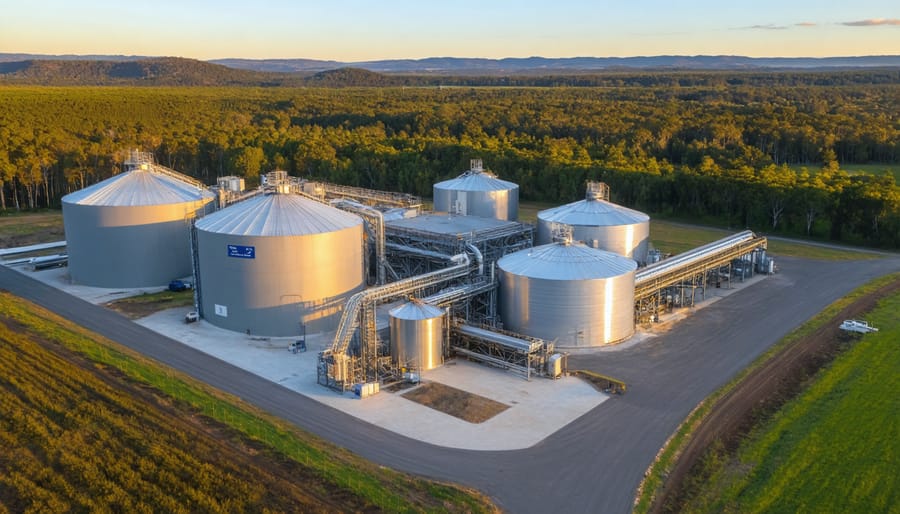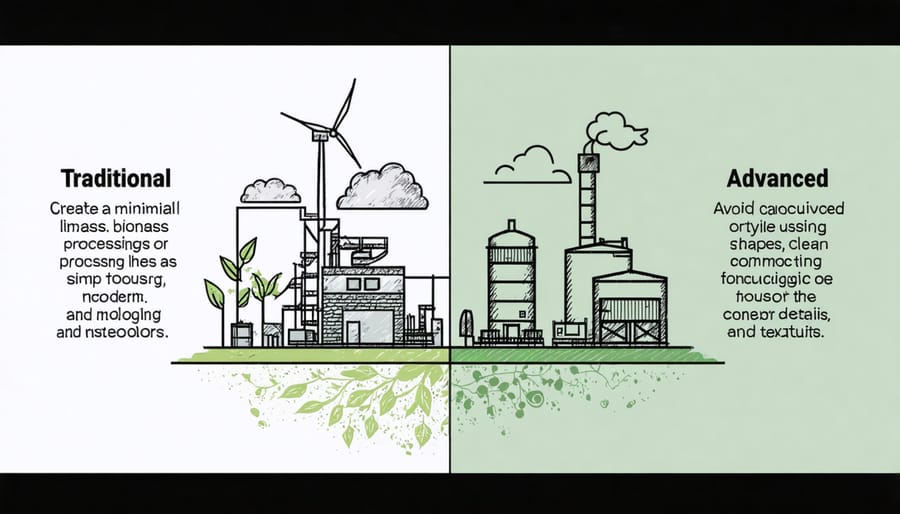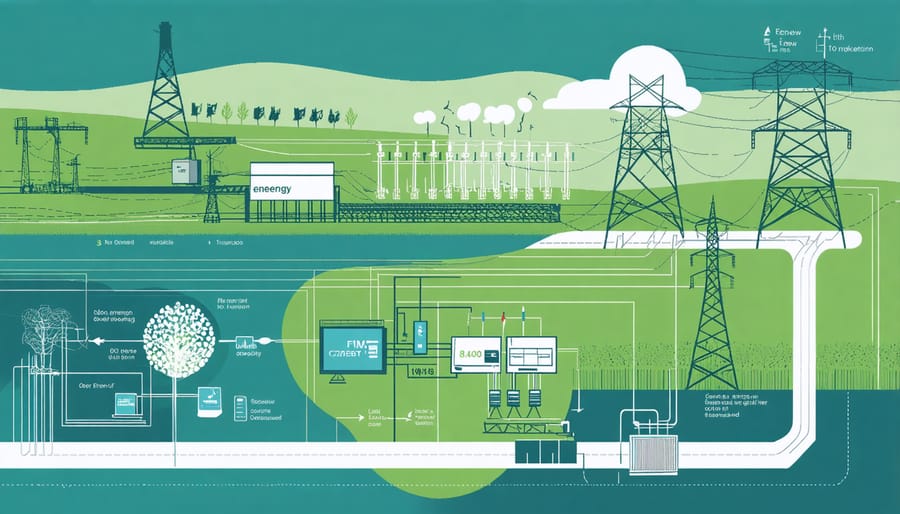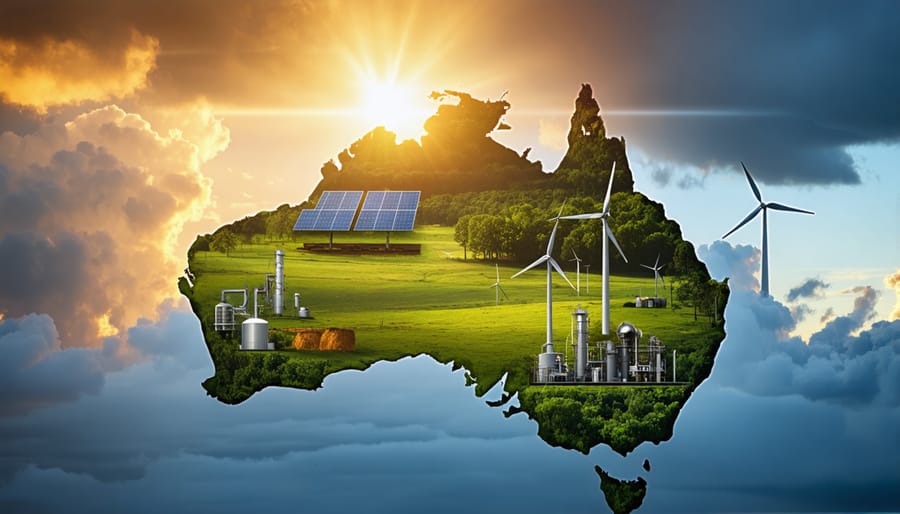Energy innovation stands at the crossroads of our climate future, driving transformative changes in how nations power their economies and sustain growth. Australia’s unique position to power its future with bioenergy and other renewable technologies represents both an unprecedented opportunity and an urgent imperative. As global markets pivot toward sustainable solutions, the intersection of smart policy frameworks and breakthrough technologies is reshaping our energy landscape at an extraordinary pace.
The successful transition to a low-carbon economy demands more than just technological advancement—it requires a sophisticated dance between innovative policy mechanisms, market incentives, and practical implementation strategies. From community-scale solar projects to grid-scale storage solutions, Australia’s energy transformation showcases how forward-thinking policy can accelerate technological adoption while ensuring economic prosperity and environmental protection.
By embracing this dual focus on policy innovation and technological progress, we’re not just addressing climate challenges; we’re creating a blueprint for sustainable economic growth that other nations can follow. This strategic approach to energy transformation demonstrates how thoughtful regulation and technological innovation can work in harmony to deliver real-world solutions for our energy future.
Australia’s Current Bioenergy Landscape

Present Policy Framework
Australia’s current energy policy framework reflects a growing commitment to renewable energy innovation, with bioenergy playing an increasingly important role. The Renewable Energy Target (RET) scheme has been instrumental in driving investment in biomass projects, while the Emissions Reduction Fund provides financial incentives for businesses adopting clean energy solutions.
State governments have implemented complementary policies, with Victoria and Queensland leading the way through dedicated bioenergy roadmaps. These frameworks have successfully encouraged the development of waste-to-energy facilities and agricultural biomass projects, creating new opportunities for farmers and regional communities.
Recent policy updates have streamlined approval processes for bioenergy projects and introduced feed-in tariffs for biomass-generated electricity. The Clean Energy Finance Corporation has also expanded its funding programs, making it easier for innovative bioenergy startups to access capital.
While these policies have shown promising results, industry feedback suggests there’s room for improvement in areas such as cross-state coordination and long-term investment certainty. The framework continues to evolve, adapting to new technologies and market demands while maintaining focus on sustainability and economic growth.
Industry Status and Challenges
Australia’s energy innovation landscape is experiencing rapid transformation, with renewable energy technologies gaining significant momentum. Currently, bioenergy contributes approximately 4% of Australia’s total energy consumption, showing promising growth potential. Leading states like Victoria and Queensland are spearheading adoption through innovative pilot projects and commercial-scale facilities.
However, several challenges persist in scaling up energy innovation nationwide. Infrastructure limitations and high initial investment costs remain significant hurdles for many organizations considering renewable energy transitions. The fragmented nature of policy frameworks across different states creates complexity for businesses operating nationally, while supply chain constraints can impact project viability.
Despite these challenges, the industry shows remarkable resilience and adaptability. Success stories like the Richgro Bioenergy Plant in Western Australia demonstrate how innovative solutions can overcome obstacles through smart partnerships and strategic planning. The emergence of new technologies and increasing government support through grants and incentives are helping address many traditional barriers.
Moving forward, industry stakeholders are focusing on developing more efficient distribution networks and streamlining approval processes to accelerate adoption rates. These efforts, combined with growing public support for sustainable energy solutions, paint an optimistic picture for the future of energy innovation in Australia.
Innovative Technology Driving Change
Advanced Biomass Processing
Recent breakthroughs in biomass processing are revolutionizing how we convert organic waste into valuable energy resources. Australian farmers and industry leaders are pioneering innovative approaches to sustainable agricultural practices that maximize biomass conversion efficiency while minimizing environmental impact.
One of the most promising developments is the introduction of advanced enzymatic processes that break down tough plant materials more effectively than traditional methods. These new catalysts can convert agricultural waste into biofuels in half the time, significantly reducing processing costs and energy consumption.
Microwave-assisted pyrolysis has emerged as another game-changing technology, allowing for rapid biomass conversion with precise temperature control. This technique produces higher-quality bio-oils and reduces carbon emissions compared to conventional thermal processing methods.
The integration of artificial intelligence and machine learning has transformed biomass processing facilities, optimizing operations in real-time. Smart sensors monitor conversion conditions, automatically adjusting parameters to achieve maximum yield while maintaining product quality. This technology has helped several Australian facilities increase their conversion efficiency by up to 30%.
Anaerobic digestion systems have also seen remarkable improvements, with new bacterial strains capable of processing a wider range of organic materials. These enhanced systems are particularly valuable for regional communities, turning food waste and agricultural residues into biogas for local power generation.
Perhaps most exciting is the development of mobile processing units that can be deployed directly to farms and forestry sites. These units reduce transportation costs and enable immediate processing of fresh biomass, resulting in higher energy yields and creating new opportunities for rural communities to participate in the bioenergy market.

Integration with Existing Infrastructure
The successful integration of new energy technologies with existing infrastructure represents one of Australia’s most promising pathways to a sustainable future. Rather than requiring a complete overhaul of current systems, many innovative solutions are designed to work alongside and gradually enhance our established energy networks.
Take the example of hybrid solar-diesel systems in remote communities. These setups allow for the seamless integration of solar power while maintaining the reliability of existing diesel generators, creating a bridge between traditional and renewable energy sources. In mining operations across Western Australia, this approach has already reduced fuel consumption by up to 60% while ensuring uninterrupted power supply.
Smart grid technologies are another excellent example of successful integration. By implementing advanced monitoring and control systems, utilities can better manage the flow of both conventional and renewable energy sources. The Victorian Smart Grid project demonstrates how digital infrastructure can optimize existing power networks while accommodating increasing amounts of renewable energy.
Battery storage solutions are proving particularly valuable in smoothing the transition. These systems can be retrofitted to existing solar installations or power stations, providing crucial stability to the grid. The Hornsdale Power Reserve in South Australia shows how large-scale batteries can effectively complement traditional power infrastructure while supporting the integration of wind and solar energy.
The key to successful integration lies in adopting a staged approach. This allows for careful testing and adjustment of new technologies while maintaining the reliability of existing systems. Through strategic planning and innovative engineering, Australia is demonstrating that the path to renewable energy doesn’t require starting from scratch – instead, it’s about building upon and enhancing what we already have.

Policy Innovation Success Stories
Regional Success Models
Australia’s diverse regions showcase remarkable success stories in energy innovation, each adapting solutions to their unique circumstances. South Australia leads the pack with its world-renowned renewable energy integration, achieving over 60% of its electricity generation from wind and solar. The state’s virtual power plant program, connecting thousands of residential solar and battery systems, demonstrates how smart policy can transform household energy.
Western Australia’s Pilbara region illustrates the power of industry collaboration, where mining companies have partnered with renewable energy providers to create hybrid power systems. These systems combine solar, battery storage, and traditional power sources, reducing both costs and emissions while maintaining reliability in remote operations.
Queensland’s Darling Downs region exemplifies agricultural waste transformation, with several facilities converting crop residues into bioenergy. This approach not only provides clean energy but also creates new revenue streams for farmers and reduces agricultural waste.
Victoria’s Latrobe Valley shows how communities can successfully transition from traditional energy sources to innovative alternatives. The region’s renewable energy hub development includes solar farms, wind projects, and energy storage facilities, creating new jobs while building on existing energy infrastructure expertise.
Tasmania’s Battery of the Nation initiative demonstrates the potential of pumped hydro storage, showcasing how natural advantages can be leveraged for next-generation energy solutions. These regional success stories provide valuable blueprints for other areas seeking to innovate their energy systems.
International Learning Opportunities
Australia can draw valuable insights from international success stories in energy innovation. Denmark’s transformation into a wind energy powerhouse offers compelling lessons, demonstrating how consistent policy support and industry collaboration can drive rapid renewable energy adoption. Their approach to community ownership of wind projects has created a model worth considering for Australian communities.
Germany’s Energiewende (energy transition) showcases the power of long-term planning and public engagement. Their feed-in tariff system and commitment to phasing out nuclear power while expanding renewables provides valuable insights for Australia’s own energy transition journey.
Japan’s innovative approach to energy efficiency and smart grid technology, particularly following the Fukushima incident, highlights the importance of adaptability and technological innovation. Their development of hydrogen infrastructure and investment in battery storage solutions offers practical examples for Australian energy planners.
South Korea’s green growth strategy, combining economic development with environmental protection, presents an appealing blueprint for balanced progress. Their success in developing clean technology clusters and fostering innovation through public-private partnerships demonstrates effective ways to accelerate energy transformation.
These international examples show that successful energy innovation requires a mix of policy stability, technological advancement, and community engagement. By learning from these experiences, Australia can adapt and implement proven strategies while avoiding potential pitfalls, ultimately crafting its own unique path to a sustainable energy future.
Future Policy Directions
Policy Framework Recommendations
To accelerate Australia’s sustainable energy transition, we recommend implementing a multi-layered policy framework that combines incentives with clear regulatory guidelines. First, establishing a National Energy Innovation Fund would provide crucial seed funding for promising clean energy technologies, particularly in regional areas where innovation potential remains untapped.
The introduction of Green Innovation Grants could support small and medium enterprises in developing and commercializing new energy solutions. These grants should prioritize projects that demonstrate clear pathways to market and potential for scaling across different sectors.
Tax incentives for early adopters of innovative energy technologies would help create initial market demand while reducing implementation risks. This could include accelerated depreciation schemes for businesses investing in emerging clean energy solutions and research and development tax credits for companies focusing on energy innovation.
Creating Innovation Zones in key regional areas would allow for real-world testing of new technologies while providing regulatory flexibility. These zones could serve as living laboratories where companies can trial solutions under controlled conditions before wider deployment.
Additionally, implementing a streamlined approval process for innovative energy projects would reduce administrative barriers while maintaining necessary safety and environmental standards. This should be coupled with clear guidelines for community engagement and benefit-sharing to ensure broad social support for new energy initiatives.
Implementation Strategies
Successful implementation of energy innovation policies requires a multi-faceted approach combining strategic planning with practical execution. The first critical step is establishing clear governance frameworks that define roles and responsibilities across government departments, industry stakeholders, and research institutions.
A staged rollout approach has proven most effective, starting with pilot programs in regions with high renewable energy potential. These pilots serve as valuable learning opportunities and help build public confidence. For instance, the successful solar initiatives in South Australia demonstrate how targeted implementation can drive wider adoption.
Funding mechanisms need to be diverse and sustainable, combining government grants, private sector investments, and innovative financing models like green bonds. The creation of dedicated innovation hubs and technology accelerators helps bridge the gap between research and commercialization.
Community engagement plays a vital role in successful implementation. Regular consultations, transparent communication, and visible demonstration projects help build public support and address concerns early in the process.
Monitoring and evaluation frameworks should be established from the outset, with clear metrics for success and regular reporting mechanisms. This allows for continuous improvement and policy adjustment based on real-world outcomes.
Cross-sector collaboration is essential, particularly between energy providers, technology developers, and end-users. Industry partnerships can accelerate technology deployment while ensuring solutions meet market needs. Regular policy reviews and updates ensure strategies remain relevant and effective in a rapidly evolving energy landscape.
The journey towards a sustainable energy future requires a carefully orchestrated dance between policy innovation and technological advancement. As we’ve seen throughout Australia’s bioenergy development, success comes when forward-thinking policies create the right environment for technological breakthroughs to flourish.
Looking ahead, the key to unlocking bioenergy’s full potential lies in maintaining this synchronized approach. Policy frameworks must remain flexible enough to accommodate emerging technologies while providing the stability needed for long-term investment. Similarly, technological innovation should be guided by policy objectives that reflect our national priorities and environmental commitments.
The success stories from regional communities, from sugar mill waste conversion to municipal organic waste management, demonstrate what’s possible when policy and technology work in tandem. These achievements aren’t just feel-good stories – they’re blueprints for future development across the country.
To maintain this momentum, we need continued collaboration between government bodies, research institutions, and industry partners. Investment in research and development must be matched with practical policy measures that help bring innovations to market. Support for pilot projects, streamlined approval processes, and clear regulatory frameworks will be essential.
The path forward is clear: by maintaining strong alignment between our policy objectives and technological capabilities, Australia can lead the way in bioenergy innovation. This coordinated approach won’t just benefit our environment – it’ll create jobs, strengthen our energy security, and build a more resilient future for generations to come.

